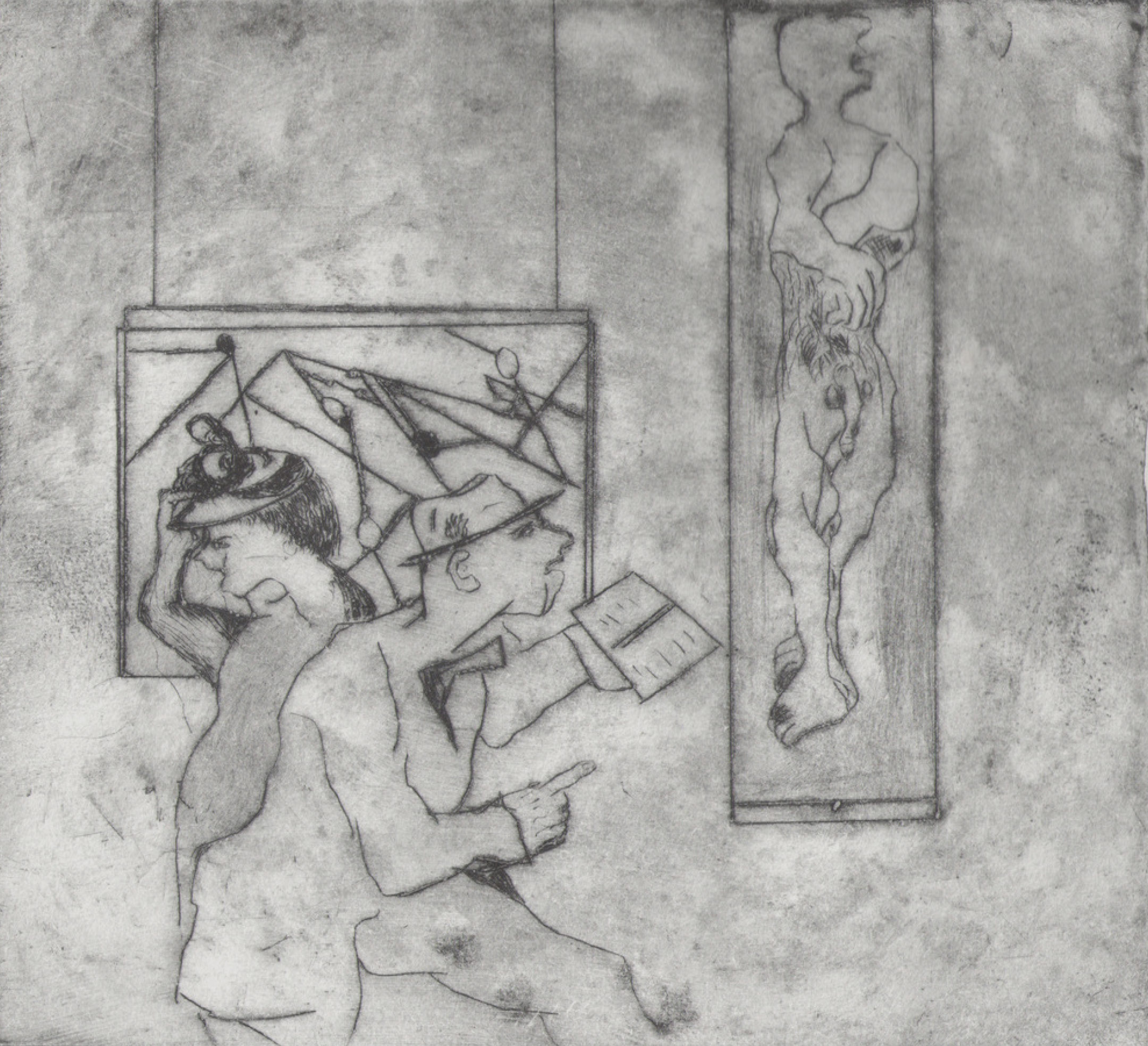
Mads Lindberg
…
August 11th – September 21st, 2023
‘Everyone has a book inside them,’ the American journalist Christopher Hitchens once said, ‘which is exactly where it should, I think, in most cases, remain.’ Even for the famously cutting Hitchens, this statement is particularly brutal. It implies that writing is better left to the professionals and that the rest of us should keep our ideas to ourselves, thank you very much.
The art world functions in a similar way: while trained professionals travel the globe, showing their wares at exhibitions, biennales, and art fairs, amateurs are stuck in the garage painting canvases to go above their mantelpieces or tinkering with sculptures for their gardens. But what makes one person an expert and the other a dilettante? And why are some pieces worth nothing while others sell for thousands of dollars?
These questions occupy Mads Lindberg, who for the past few years has been making art out of canvases found through his part-time job clearing houses. As Lindberg explains, during these house clearances anything that can be resold is put to one side, while everything else is thrown out – irrespective of how much sentimental value it might have held for the deceased owner. By saving these works from the skip, he offers them a new home as part of a conceptual practice with its roots in the thrift store paintings of Jim Shaw and Asger Jorn. To paraphrase the title of a 2008 exhibition at Vienna’s Mumok, which featured both artists, sometimes bad painting equals good art.
Comprising a selection of landscapes from this series and a metal sculpture, ‘…’ at C.C.C. is a shrine to unfulfilled potential. The pieces on display feature picturesque representations of country life (chickens, wagons, and overalls) and kitschy wish fulfilment (women, swans, and castles) created with an earnest sincerity only undercut by the blizzard of snowballs Lindberg has painted across their surfaces. Made using a stencil, there is a cartoonish quality to these forms, which some Danish viewers might recognize from the advertising posters for Julebryg, Tuborg’s Christmas beer.
Launched on “J-day” at 9pm and only available for six weeks, the beer’s release marks the beginning of the Christmas season for many Danes. It is reportedly also followed by a spike in violent crime. There is a clear absurdity in this pairing as bucolic, overwrought landscapes are taken over by motifs from a slick advertising campaign that promotes excessive drinking. Here, instead of merging high and low culture à la pop art, Lindberg combines low with low, using what he calls, ‘Minus minus equals plus logic’ to produce something of worth. Value is also the implicit subject of the exhibition’s final work, a largescale reproduction of a found supermarket receipt. Featuring a variety of different types of bread bought at Netto, the receipt and its reproduction poke fun at Danish stereotypes as well as the medium’s status as a place where the super-rich can park their money.
Beyond offering a quippy critique of the art market, in which taste is privileged above all else, ‘…’ reinforces Lindberg’s love of the hobbyist. Rather than destroying their work, he accentuates it, cleaning up and nickel-plating metal or removing rotten frames to give what’s underneath a new lease of life. The owners might be gone, but their work has survived them. Ultimately, it’s an act of love. In the words of the artist himself, “The gifted amateur is my guy.”
Chloe Stead is an editor and art critic based in Berlin.
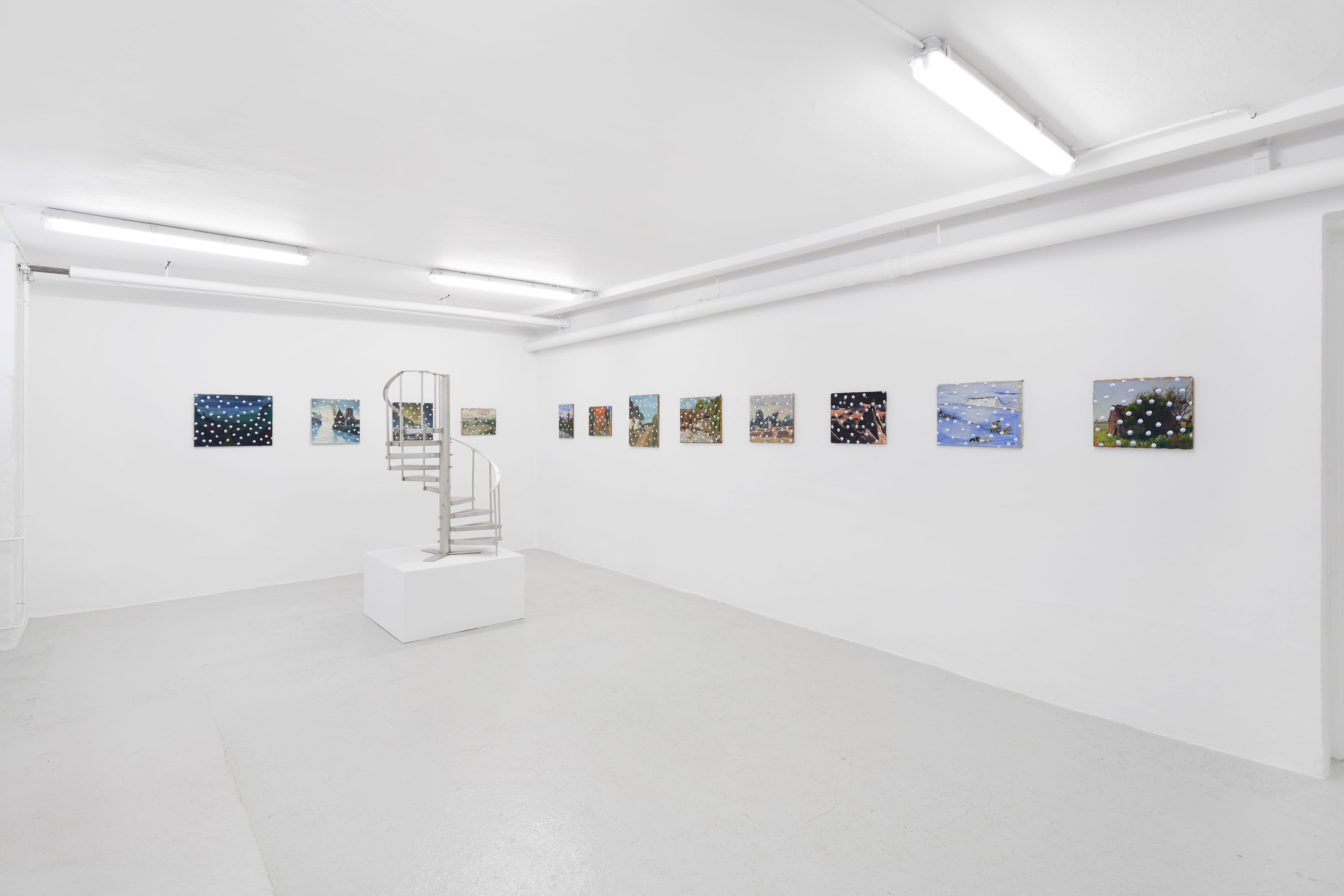
Mads Lindberg. … 2023. Installation view. Photo by Brian Kure 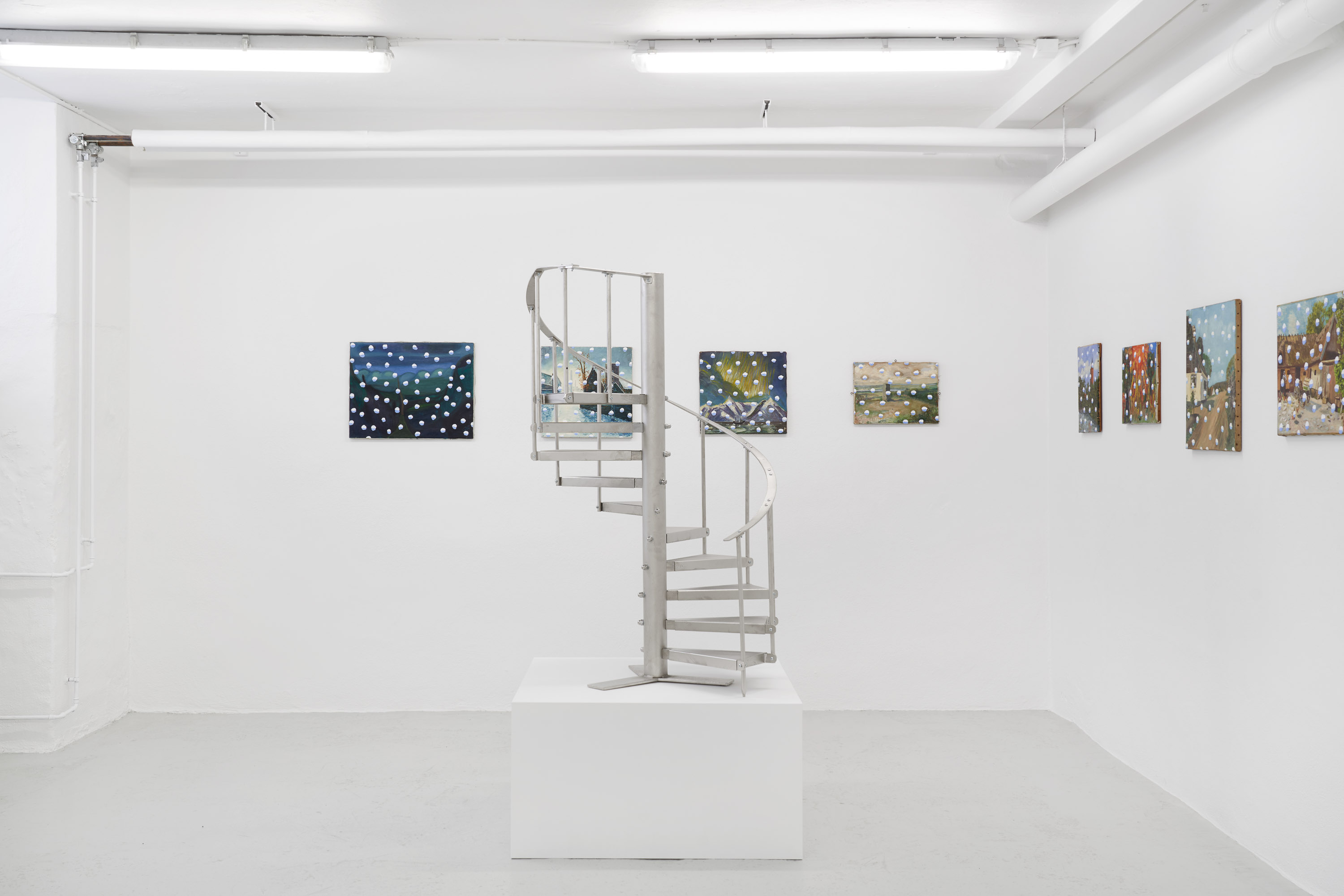
Mads Lindberg. … 2023. Installation view. Photo by Brian Kure 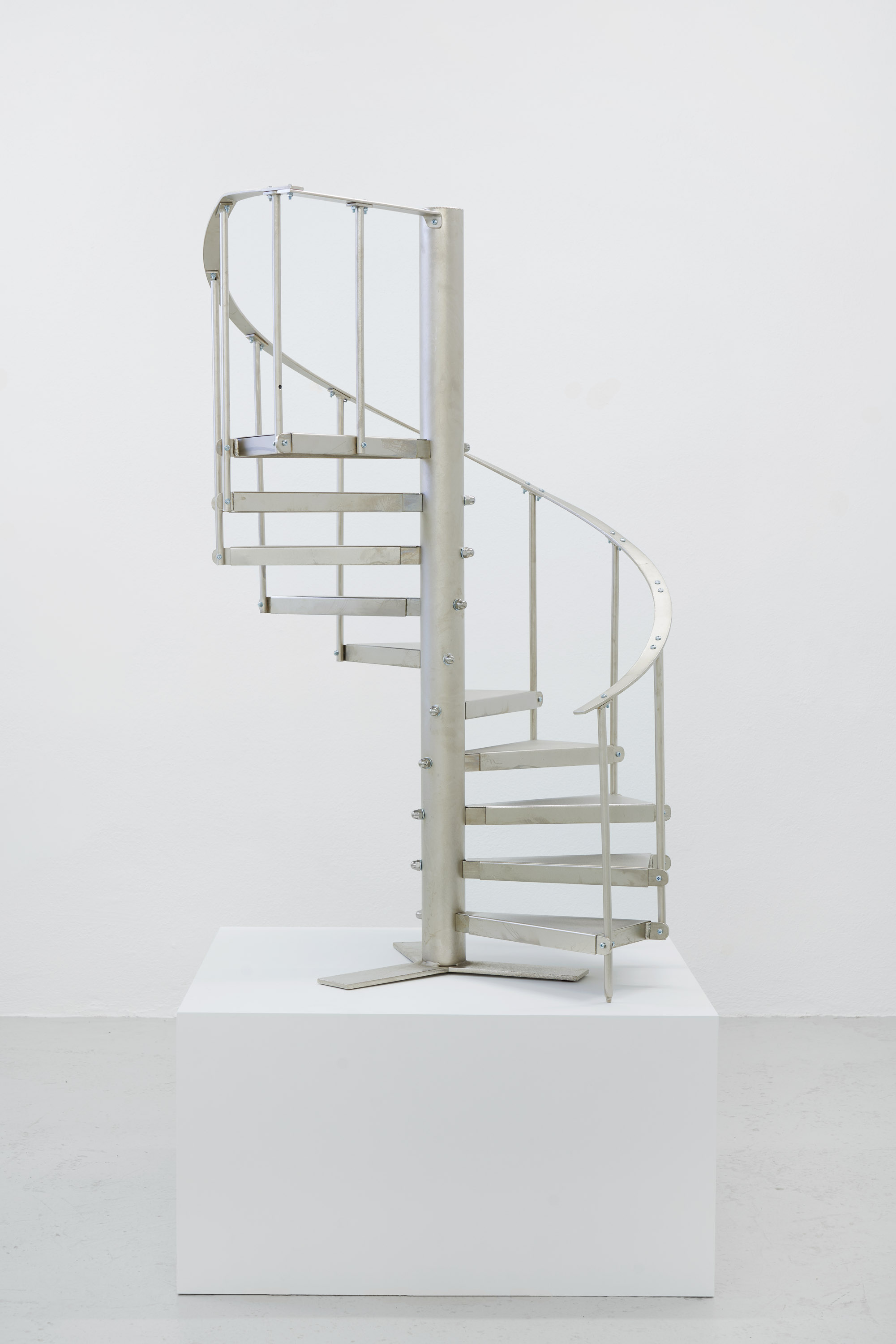
Mads Lindberg. Untitled (Staircase), 2023. Nickel plated steel. 130 x 78 x 70 cm 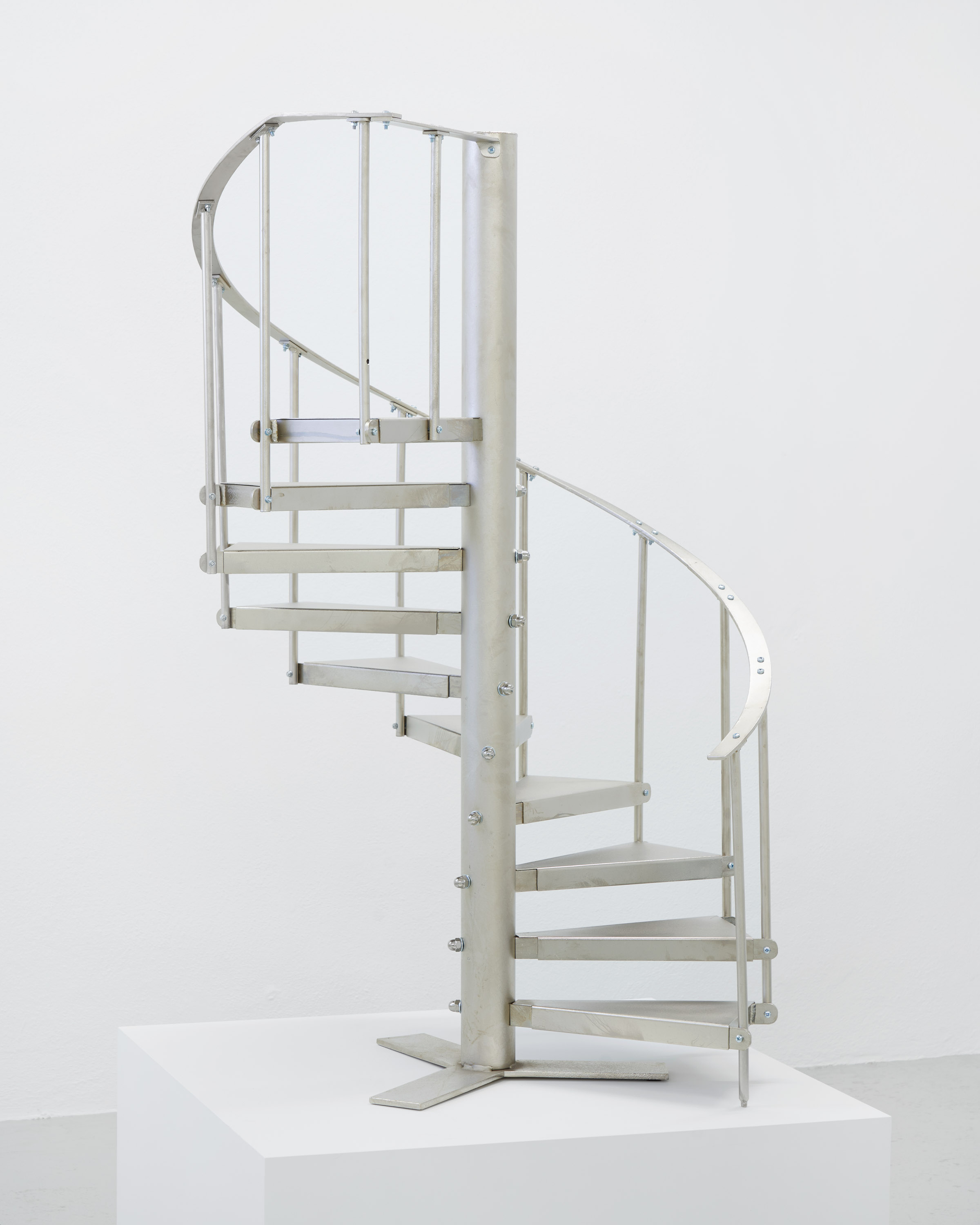
Mads Lindberg. Untitled (Staircase), 2023. Nickel plated steel. 130 x 78 x 70 cm 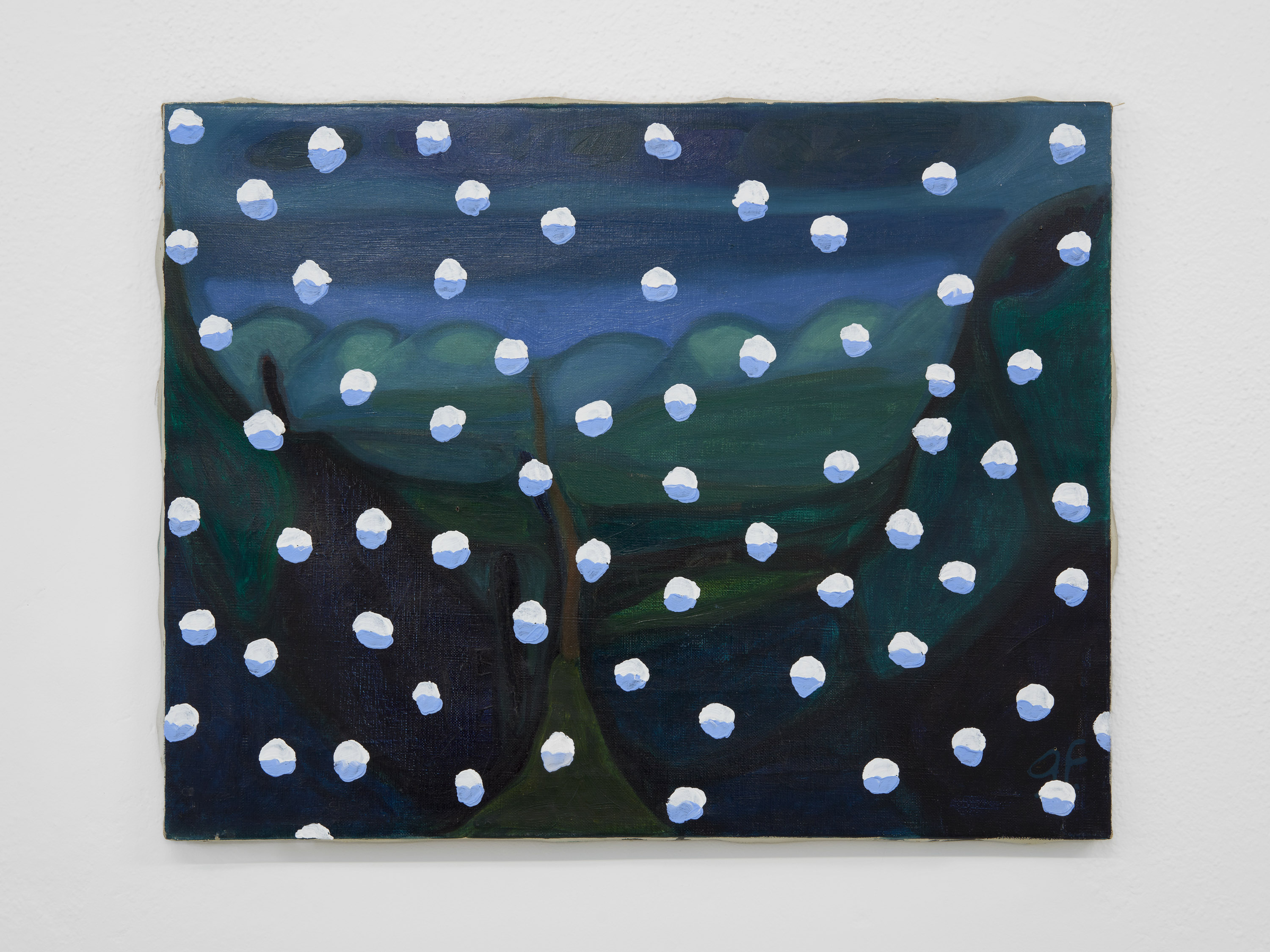
Mads Lindberg. Untitled (Snow Painting), 2023. Oil on found painting. 43 x 54,5 cm 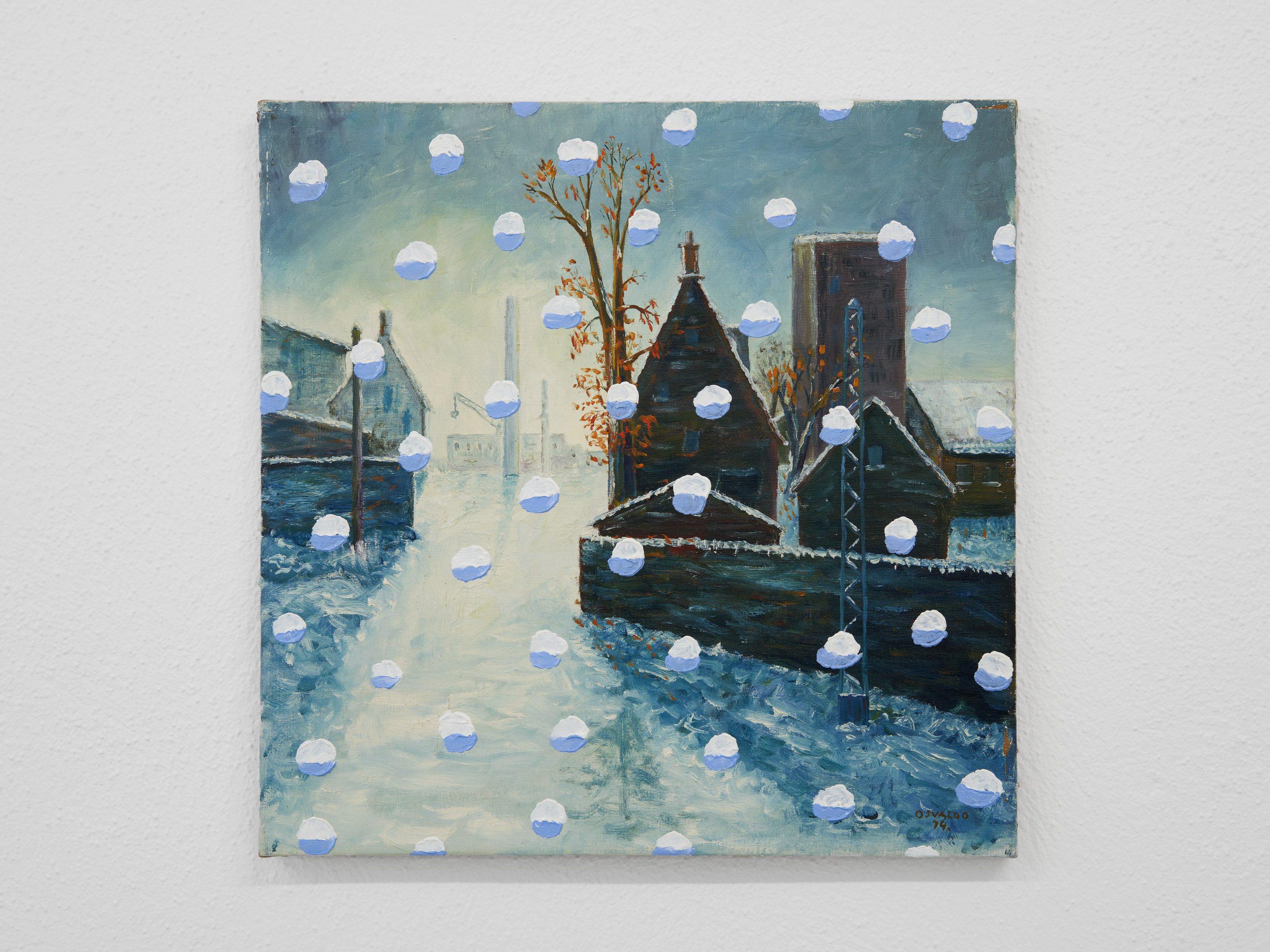
Mads Lindberg. Untitled (Snow Painting), 2023. Oil on found painting. 40 x 40 cm 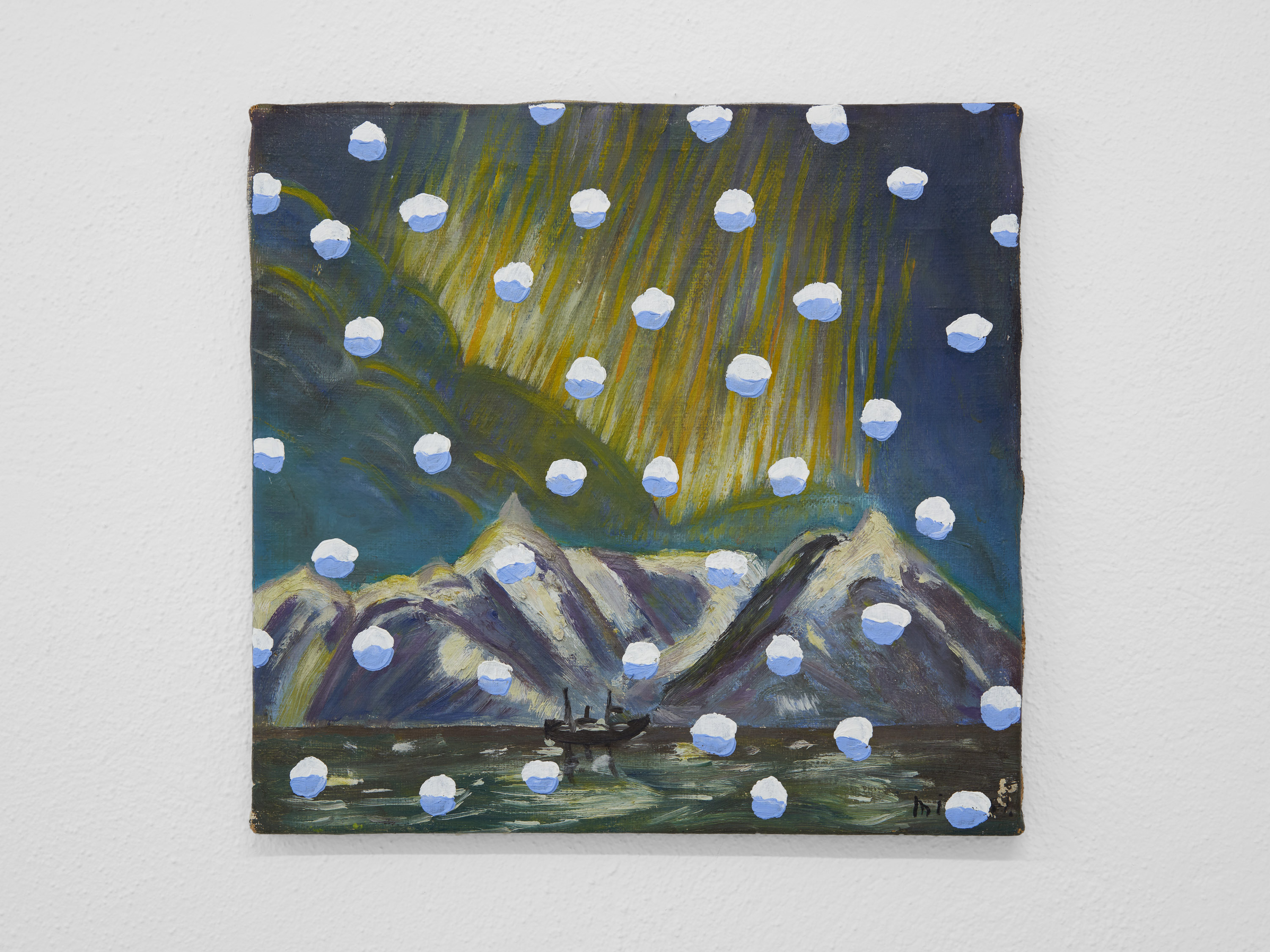
Mads Lindberg. Untitled (Snow Painting), 2023. Oil on found painting. 36 x 38 cm 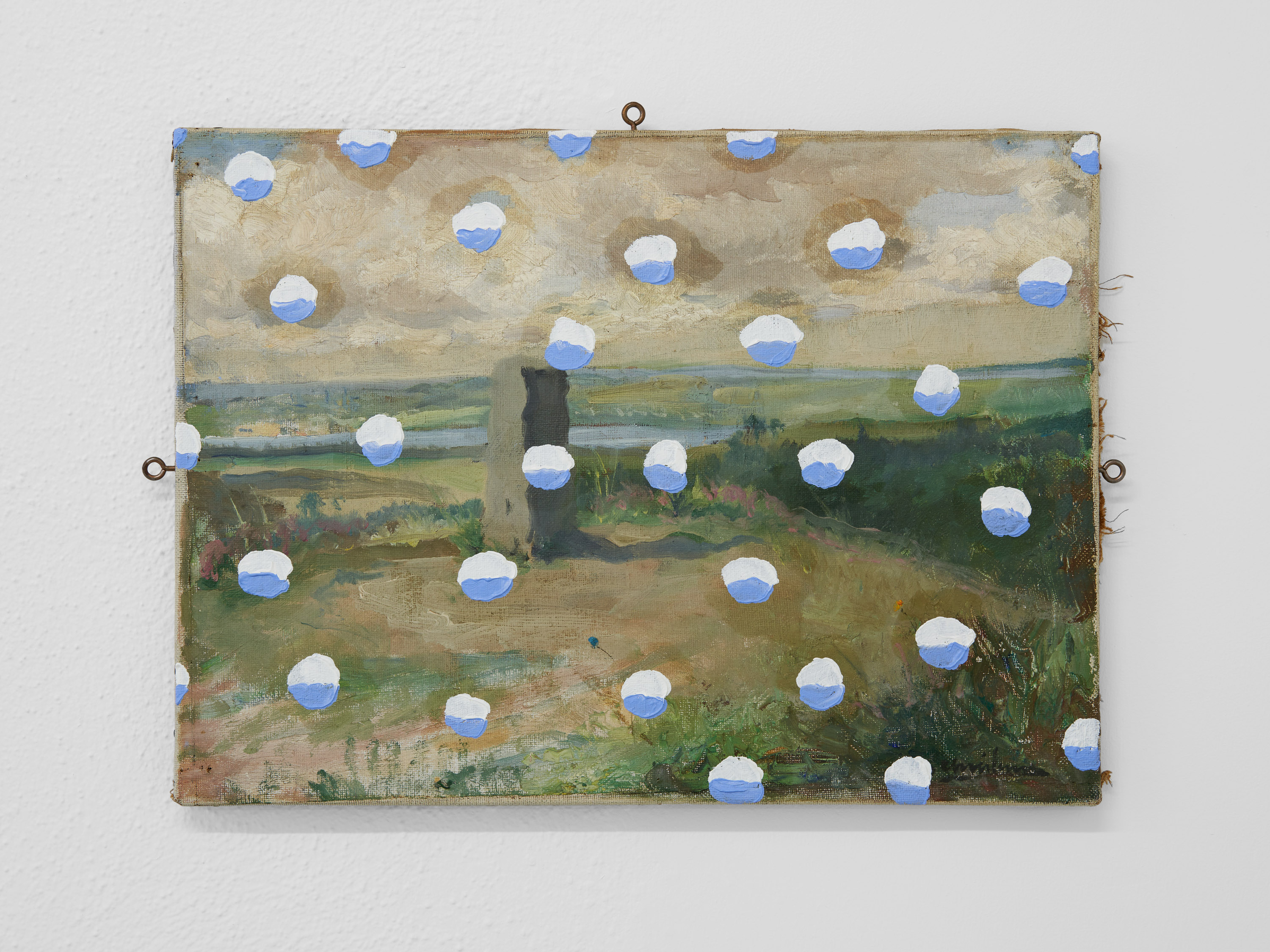
Mads Lindberg. Untitled (Snow Painting), 2023. Oil on found painting. 27 x 37 cm 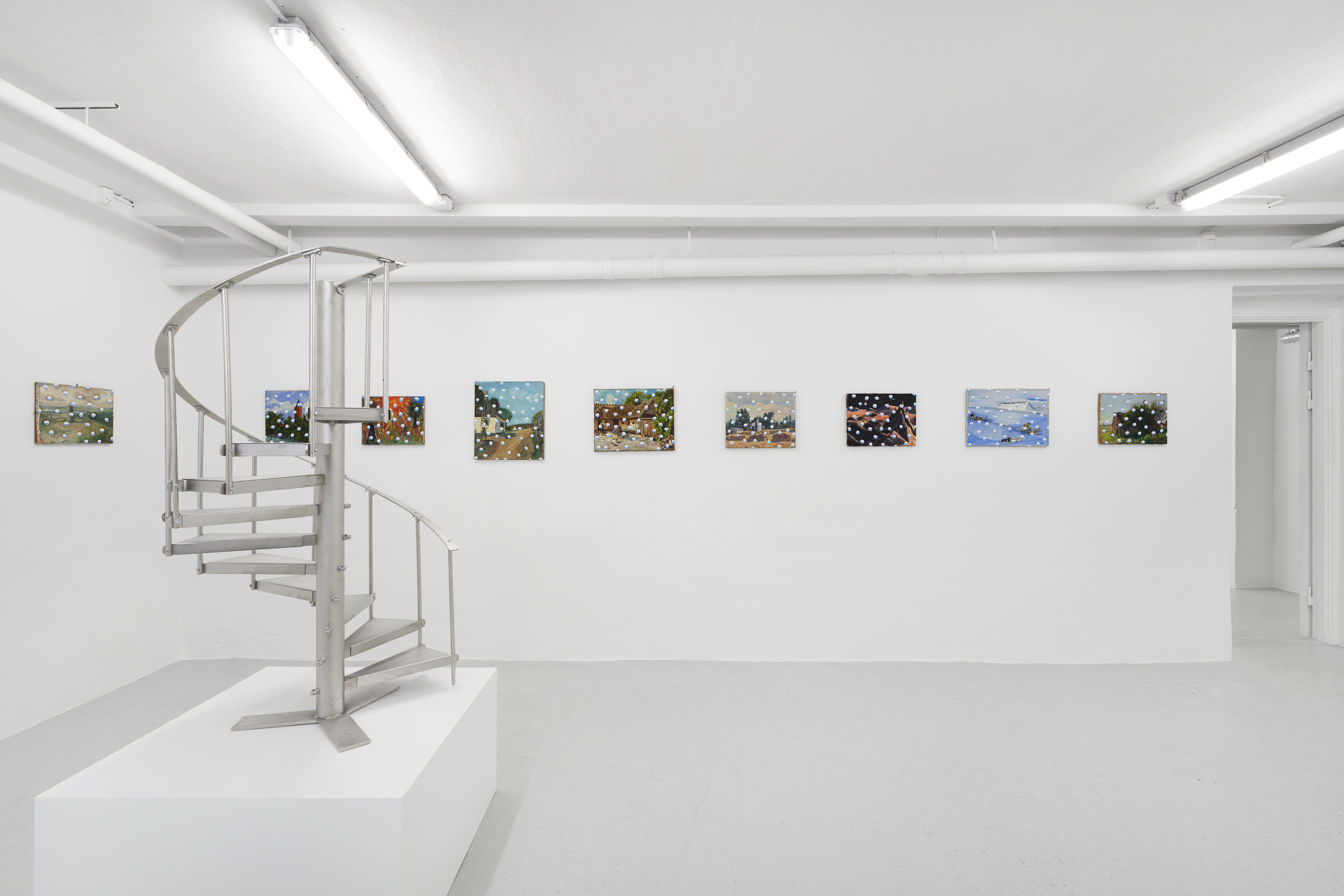
Mads Lindberg. … 2023. Installation view. Photo by Brian Kure 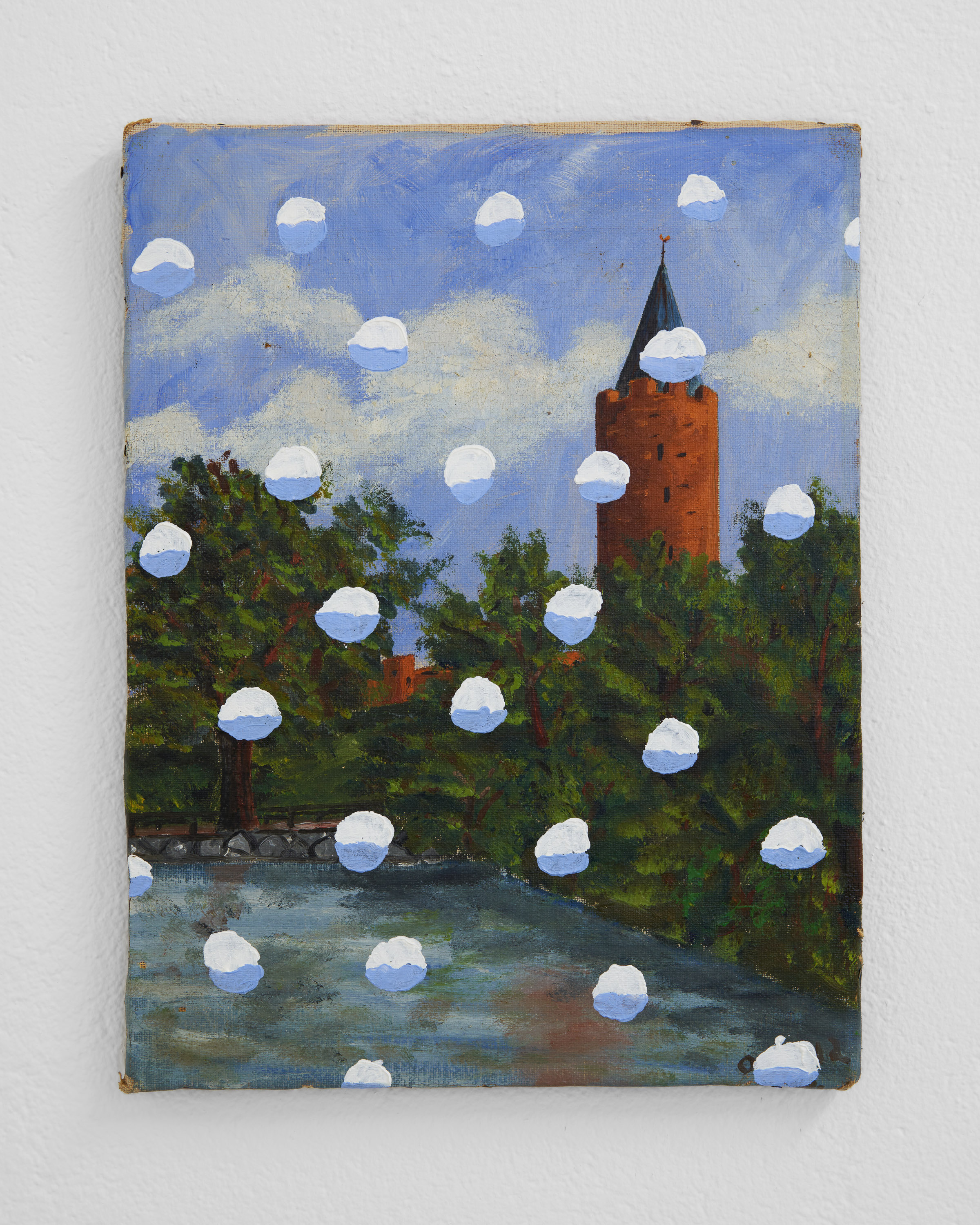
Mads Lindberg. Untitled (Snow Painting), 2023. Oil on found painting. 35 x 26 cm 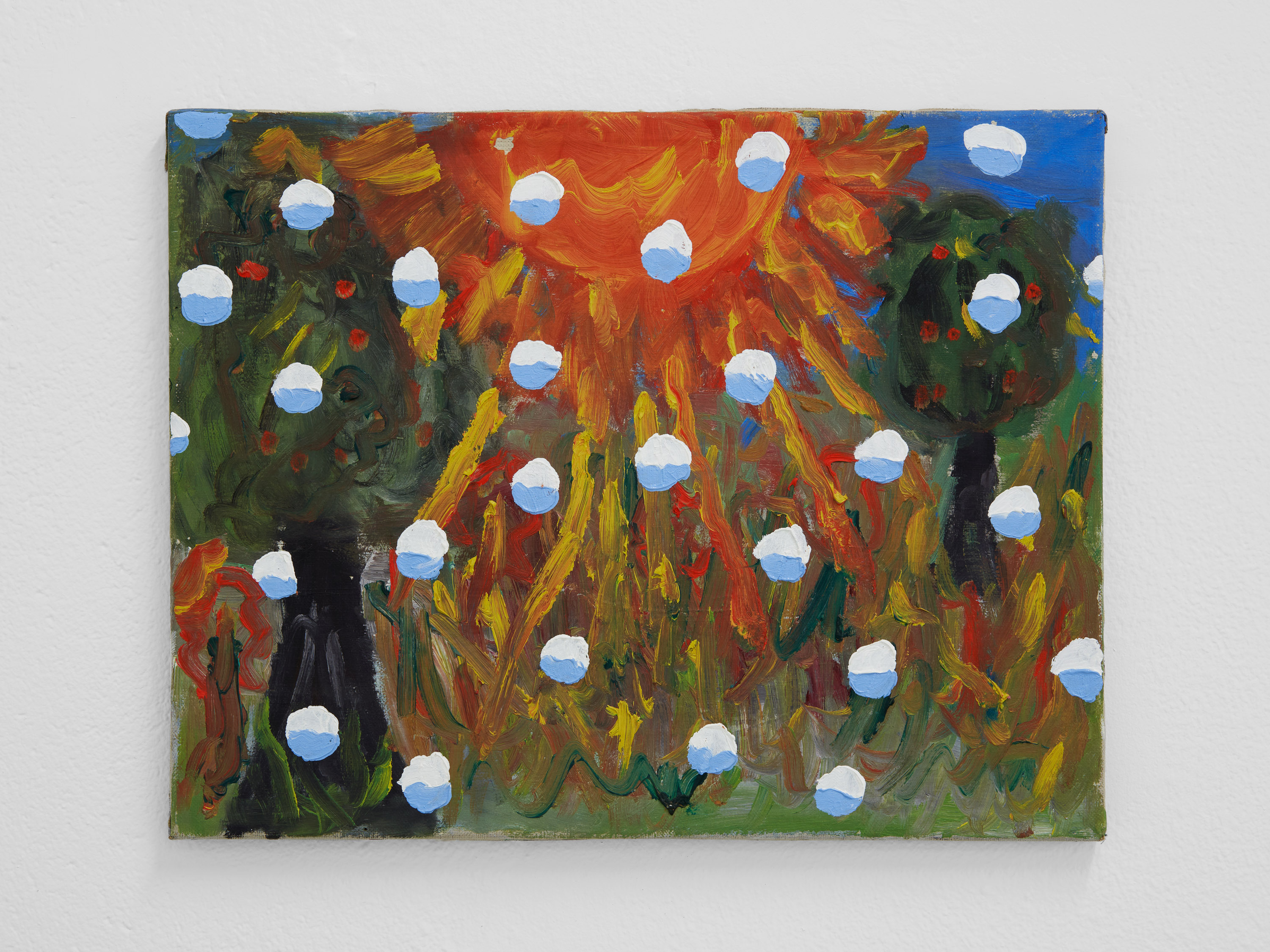
Mads Lindberg. Untitled (Snow Painting), 2023. Oil on found painting. 28 x 36 cm 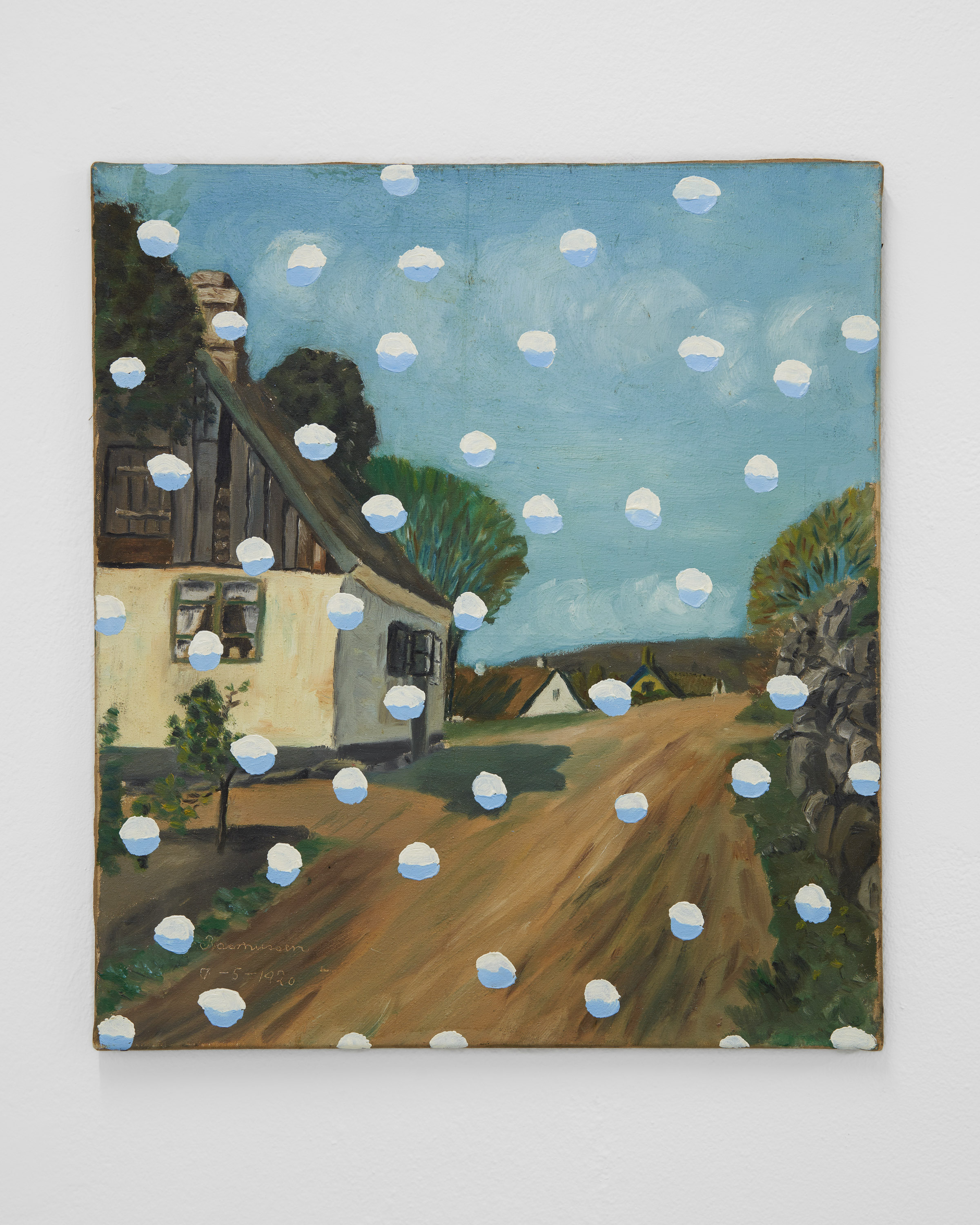
Mads Lindberg. Untitled (Snow Painting), 2023. Oil on found painting. 45 x 40 cm 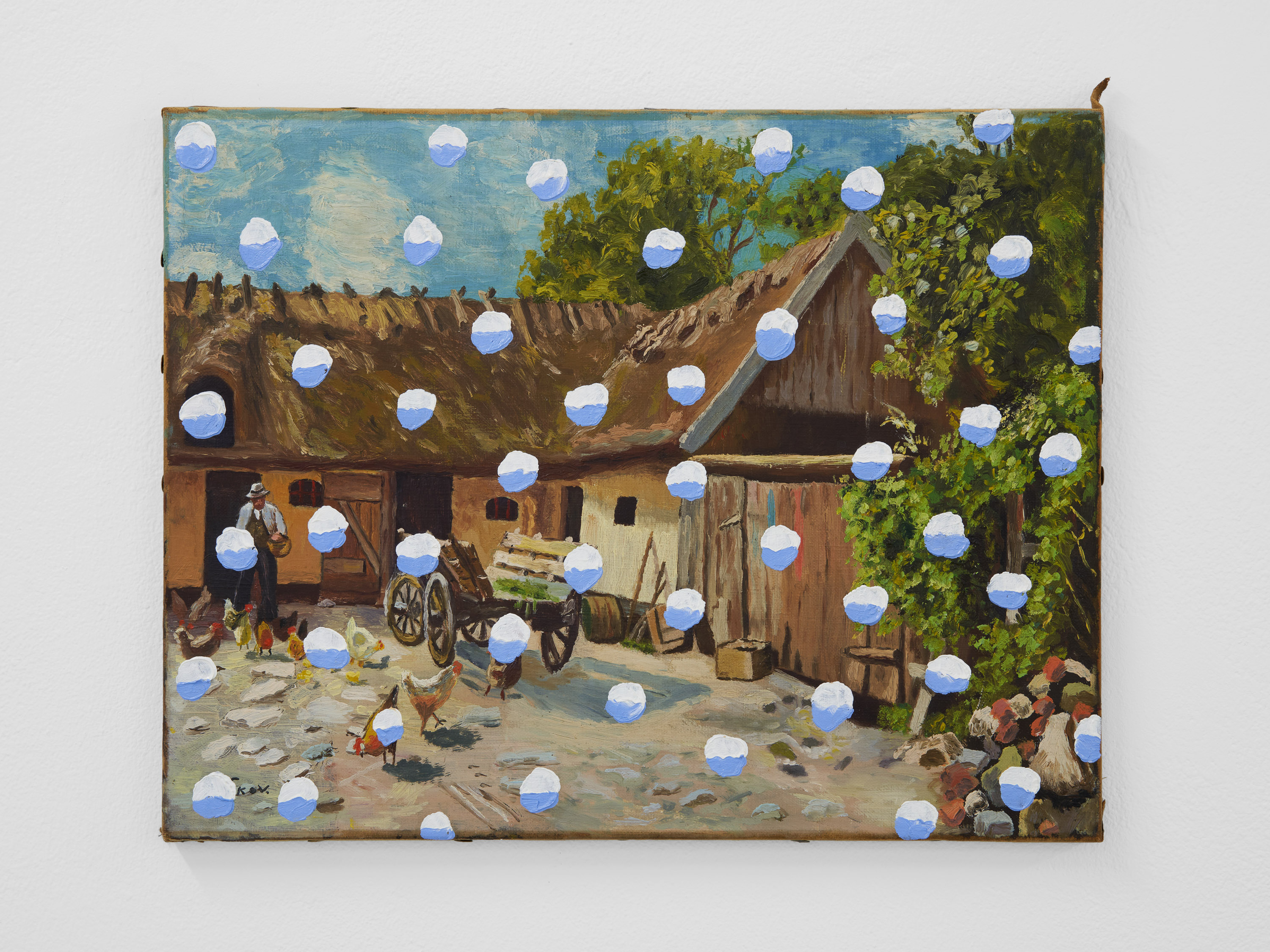
Mads Lindberg. Untitled (Snow Painting), 2023. Oil on found painting. 37 x 46,5 cm 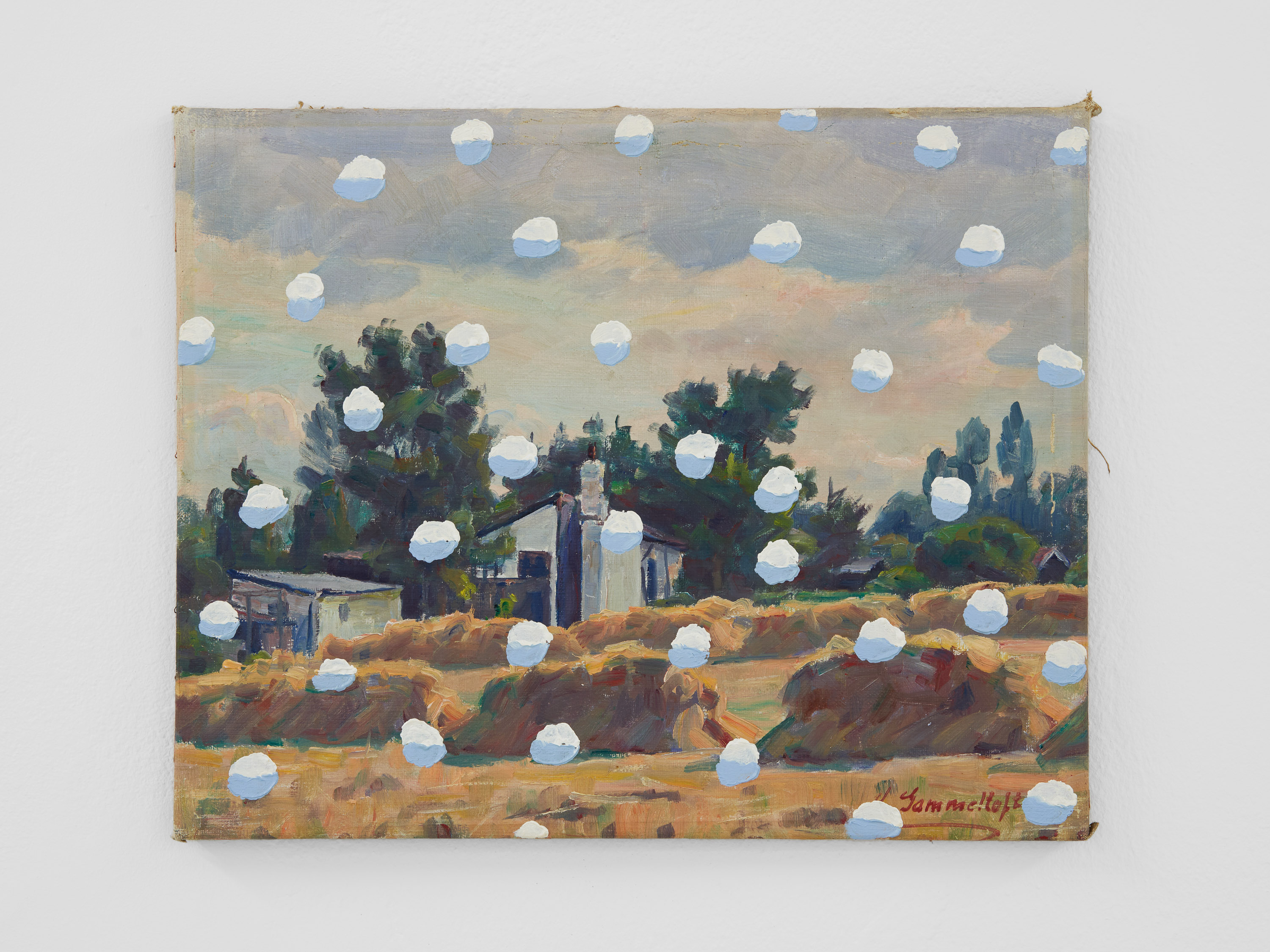
Mads Lindberg. Untitled (Snow Painting), 2023. Oil on found painting. 32 x 40 cm 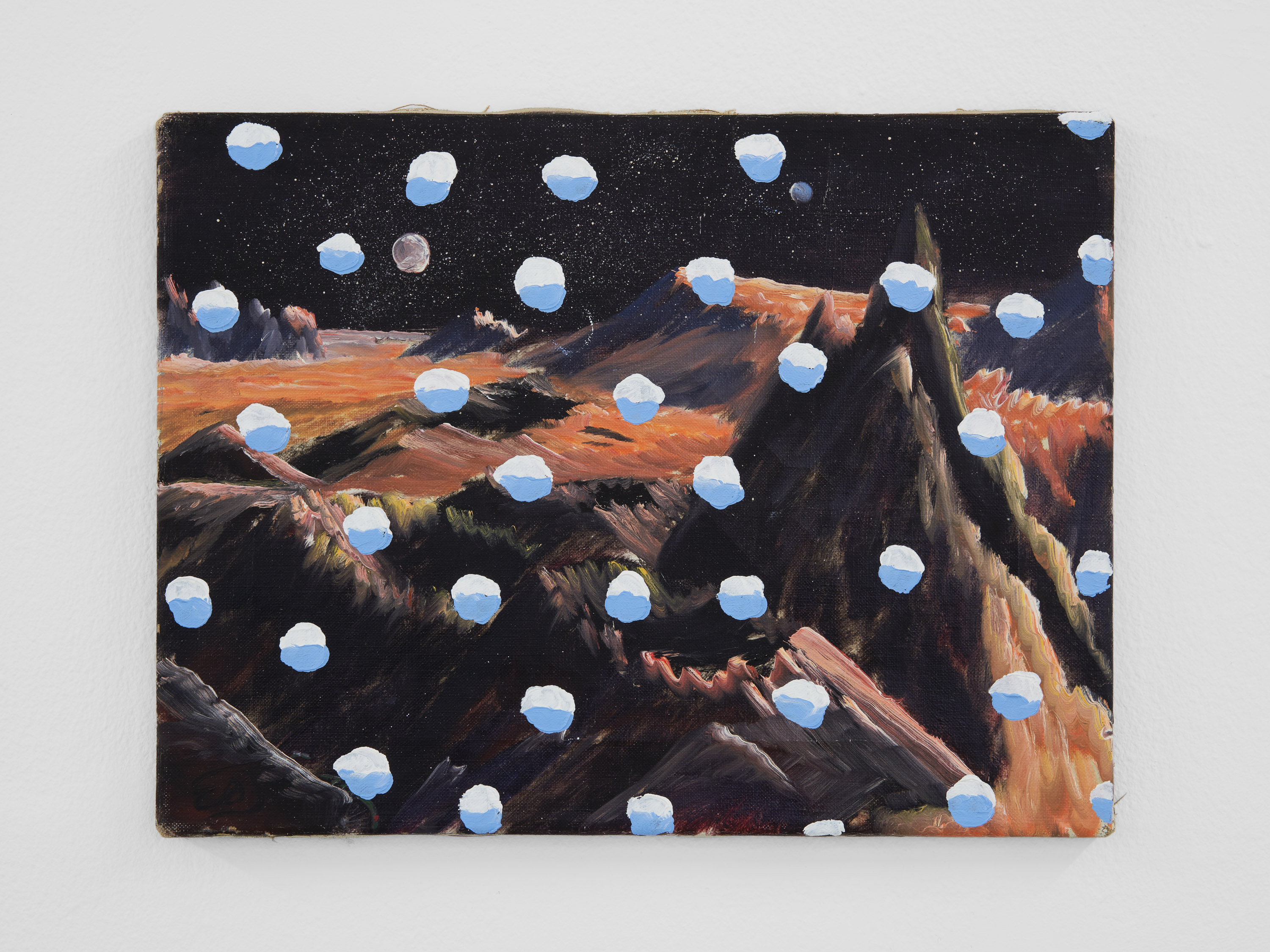
Mads Lindberg. Untitled (Snow Painting), 2023. Oil on found painting. 30 x 40 cm 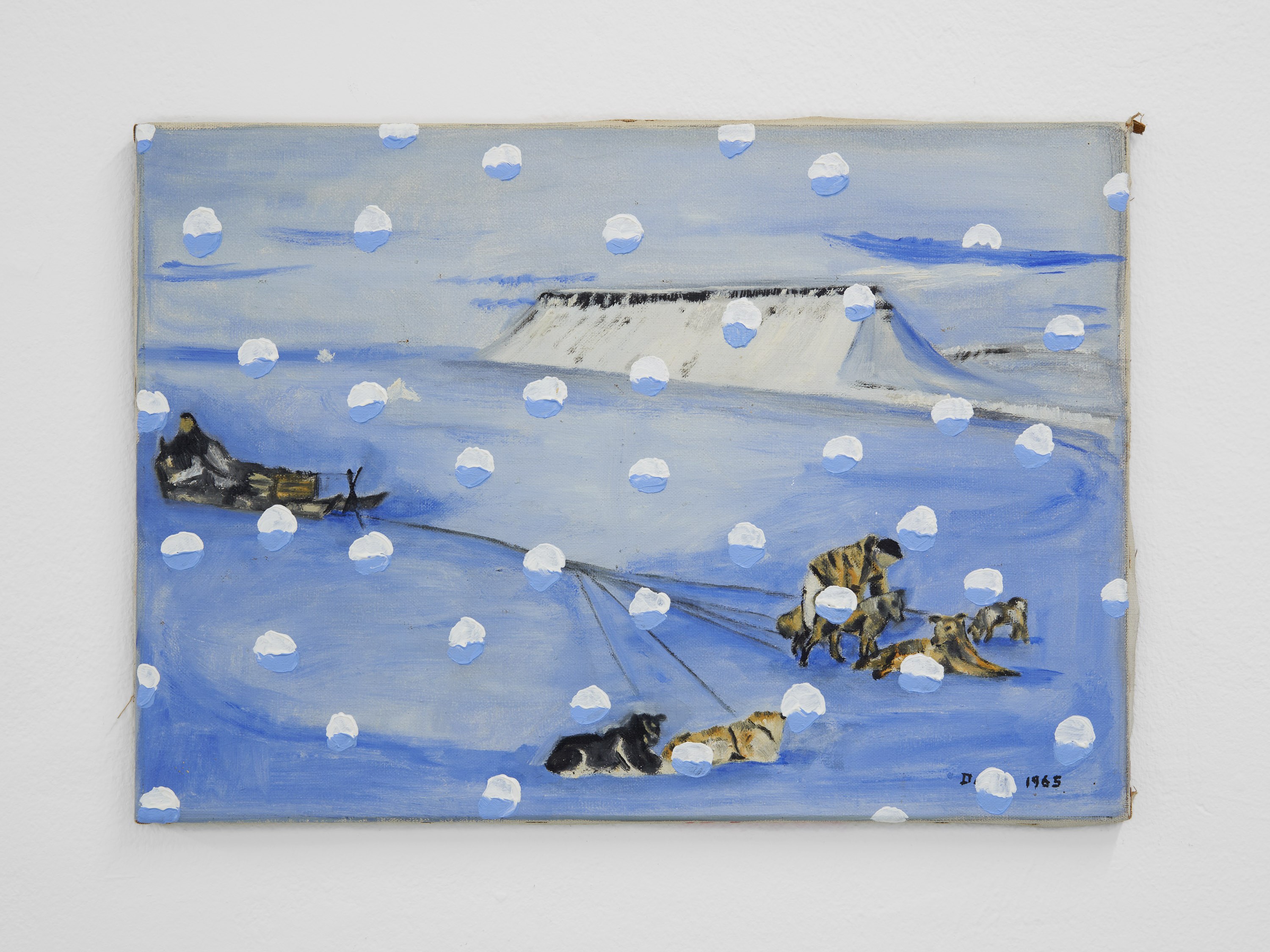
Mads Lindberg. Untitled (Snow Painting), 2023. Oil on found painting. 33,5 x 47 cm 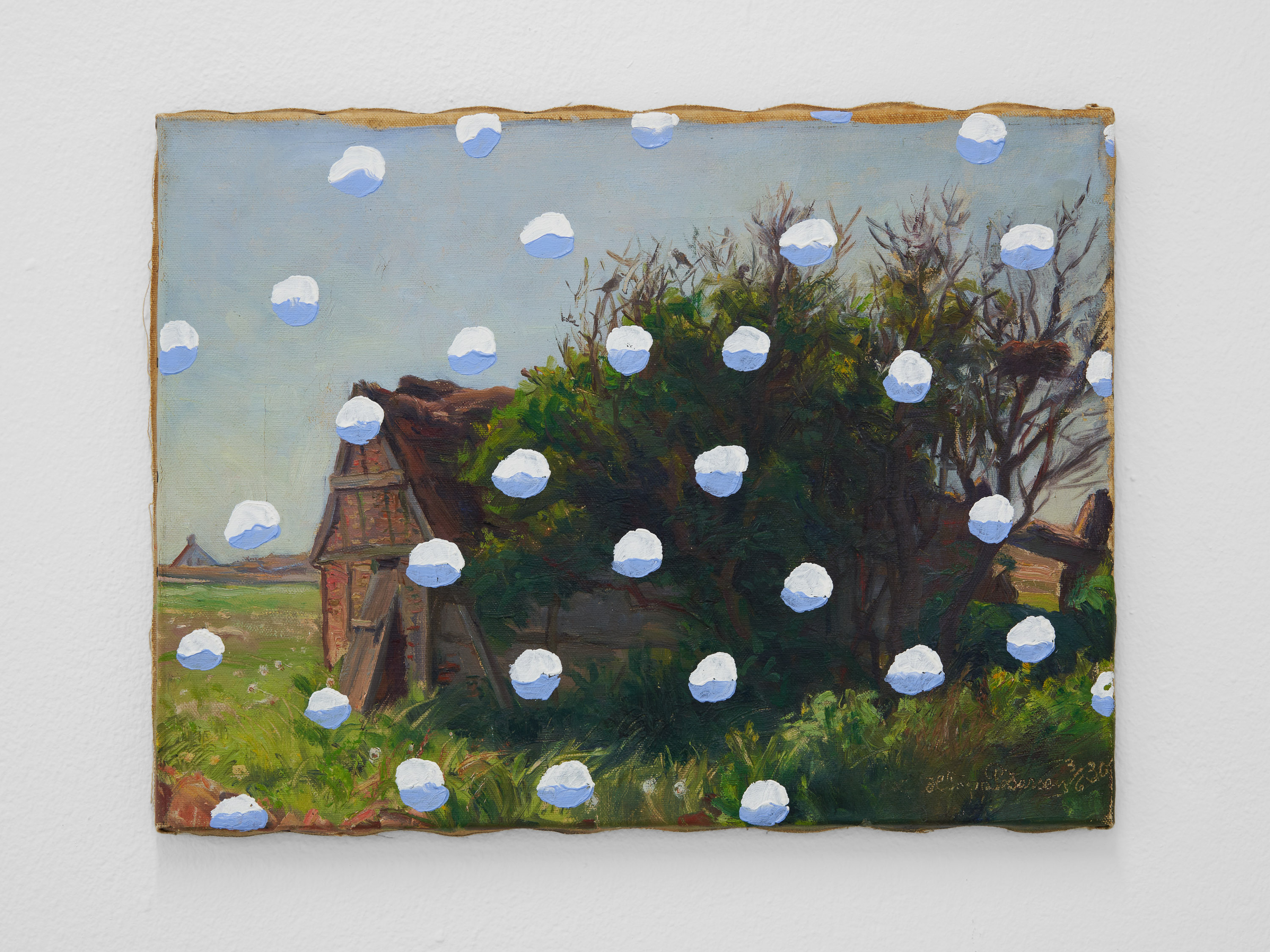
Mads Lindberg. Untitled (Snow Painting), 2023. Oil on found painting. 29 x 39 cm 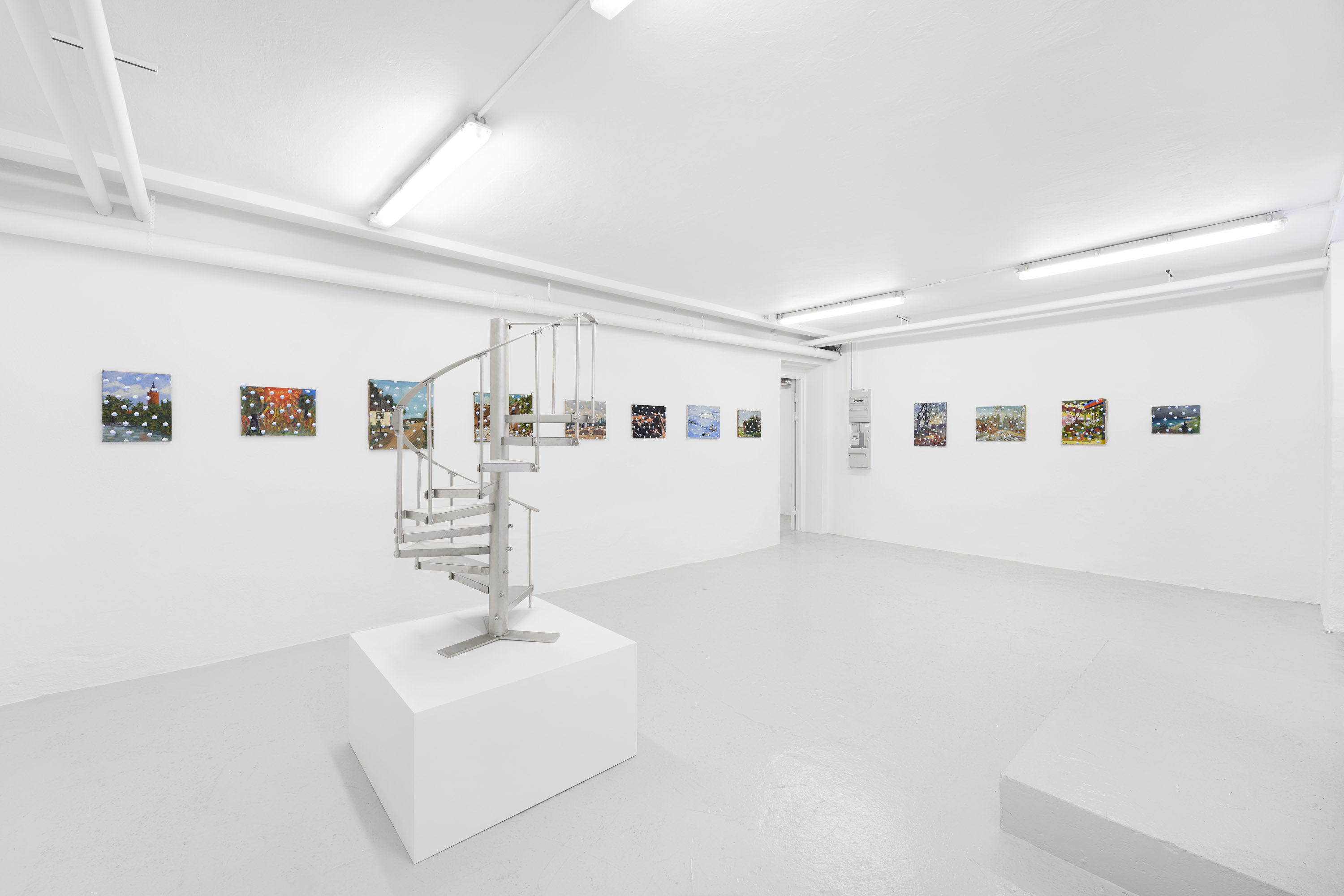
Mads Lindberg. … 2023. Installation view. Photo by Brian Kure 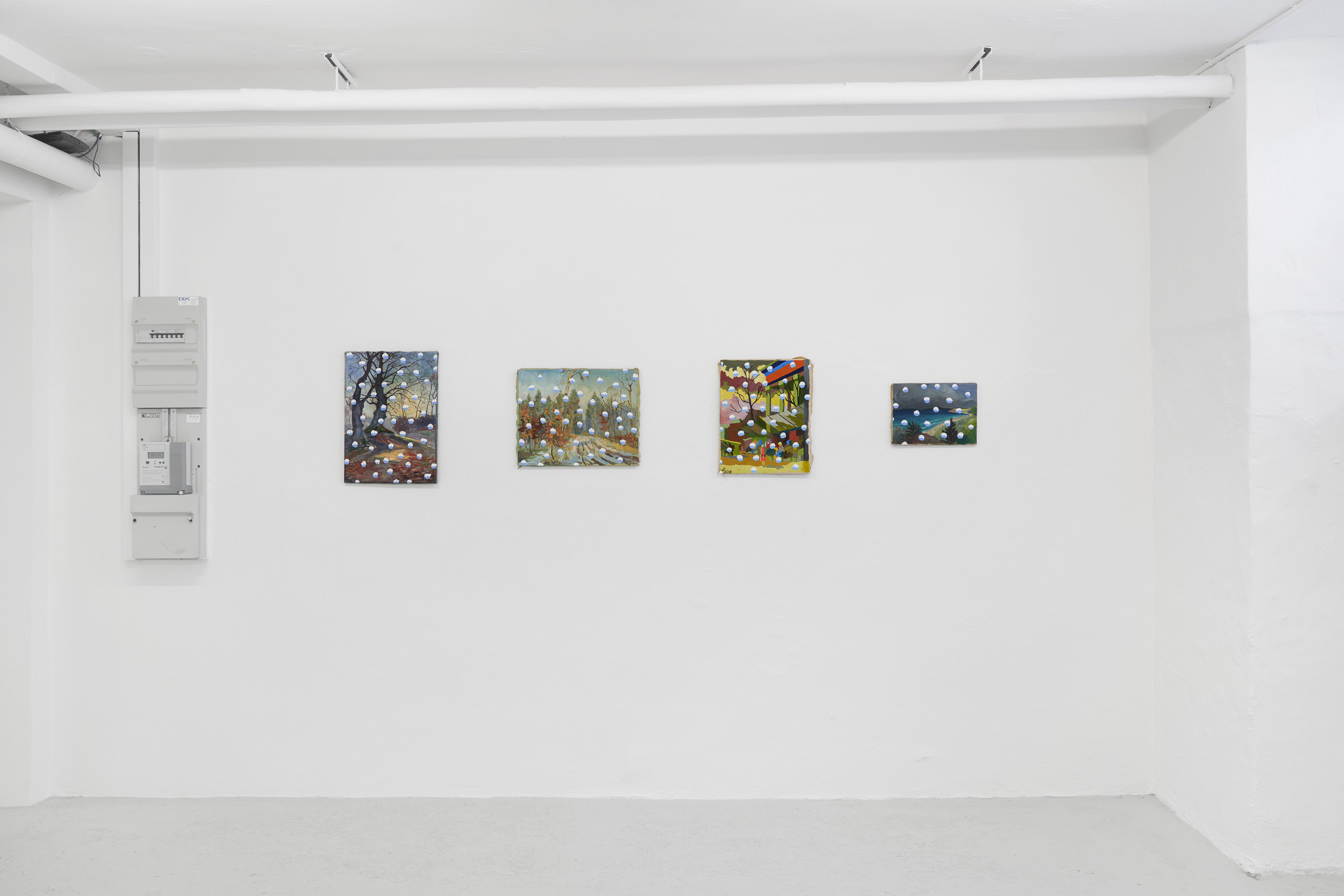
Mads Lindberg. … 2023. Installation view. Photo by Brian Kure 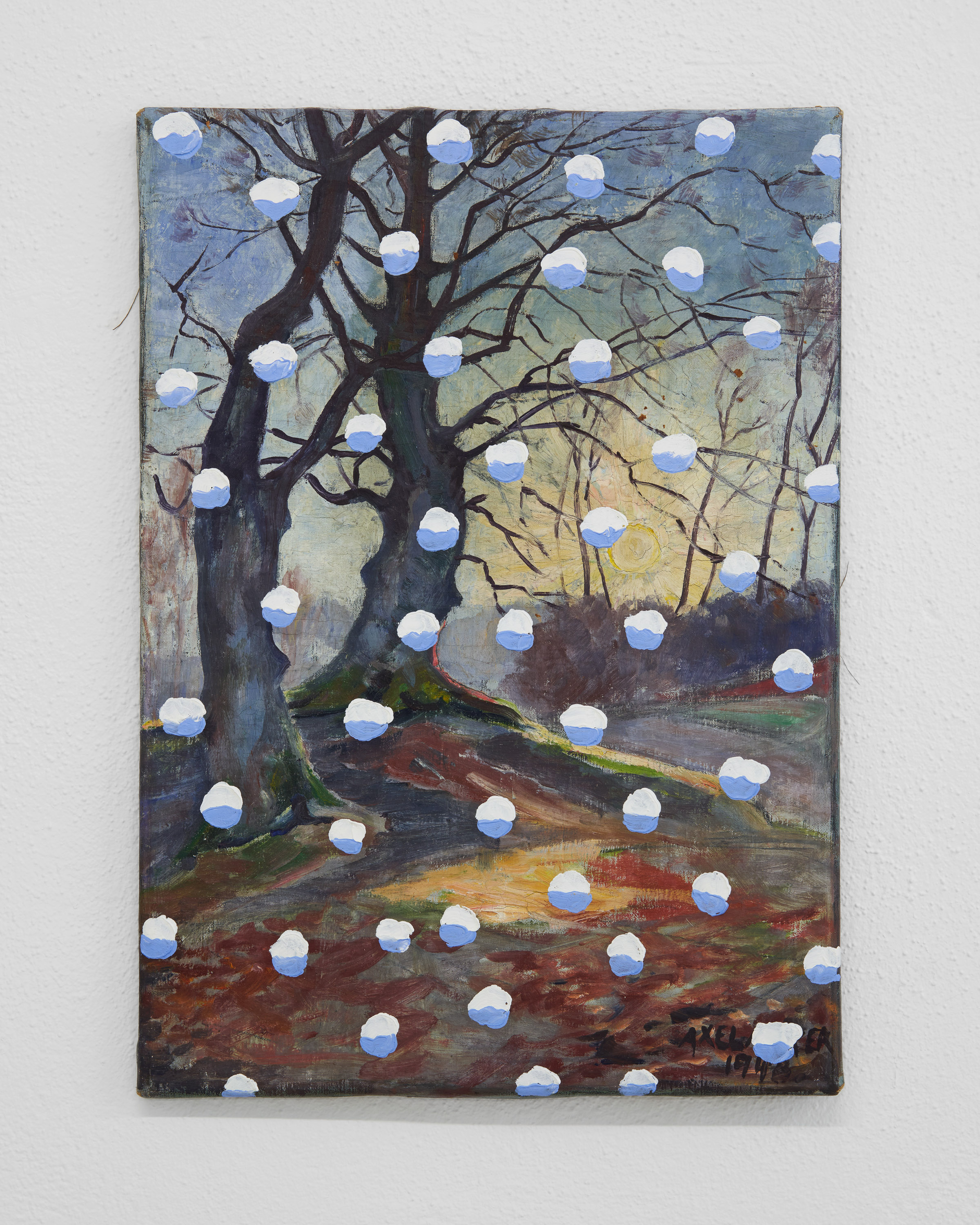
Mads Lindberg. Untitled (Snow Painting), 2023. Oil on found painting. 48,5 x 34 cm 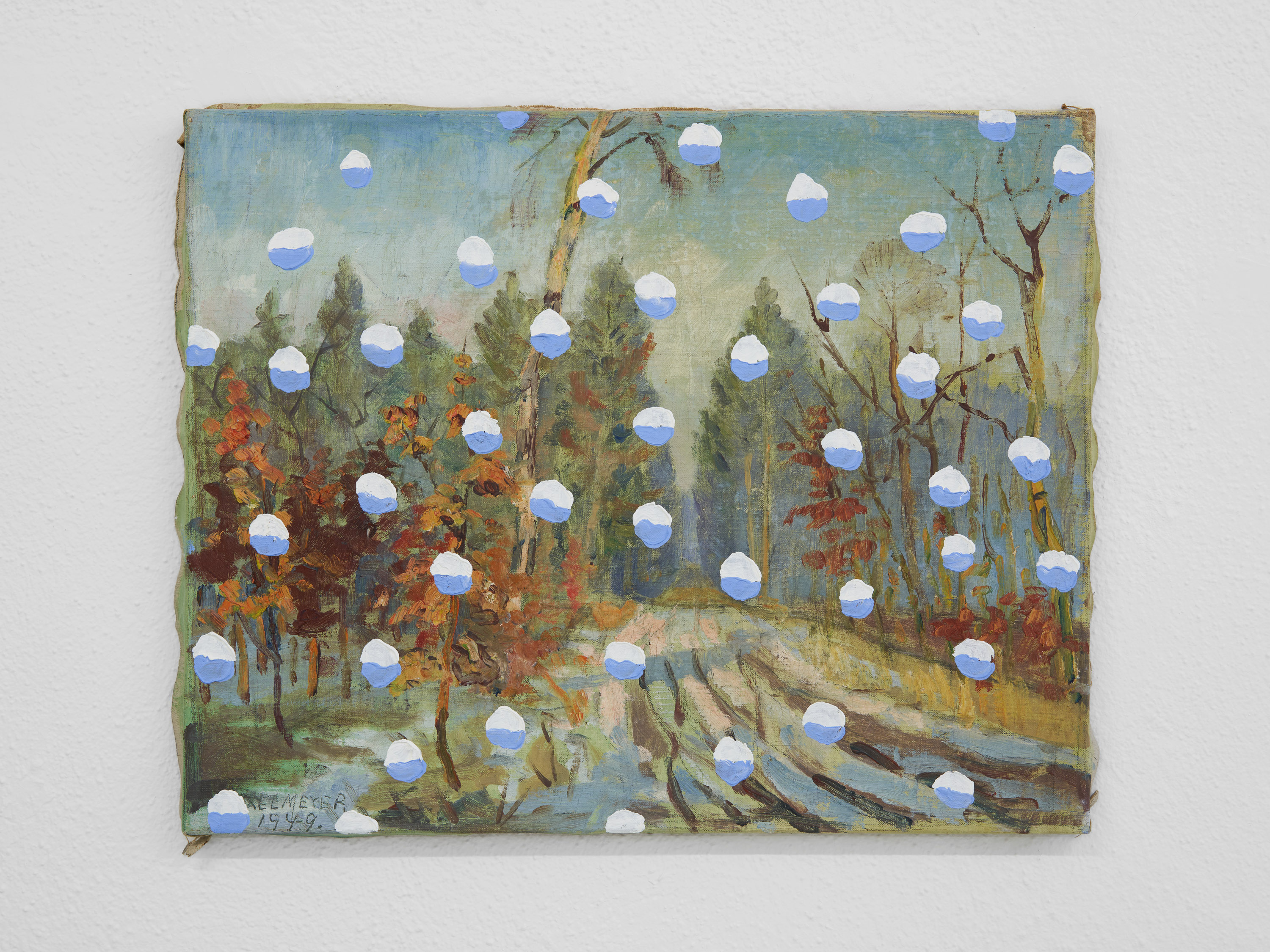
Mads Lindberg. Untitled (Snow Painting), 2023. Oil on found painting. 35 x 44 cm 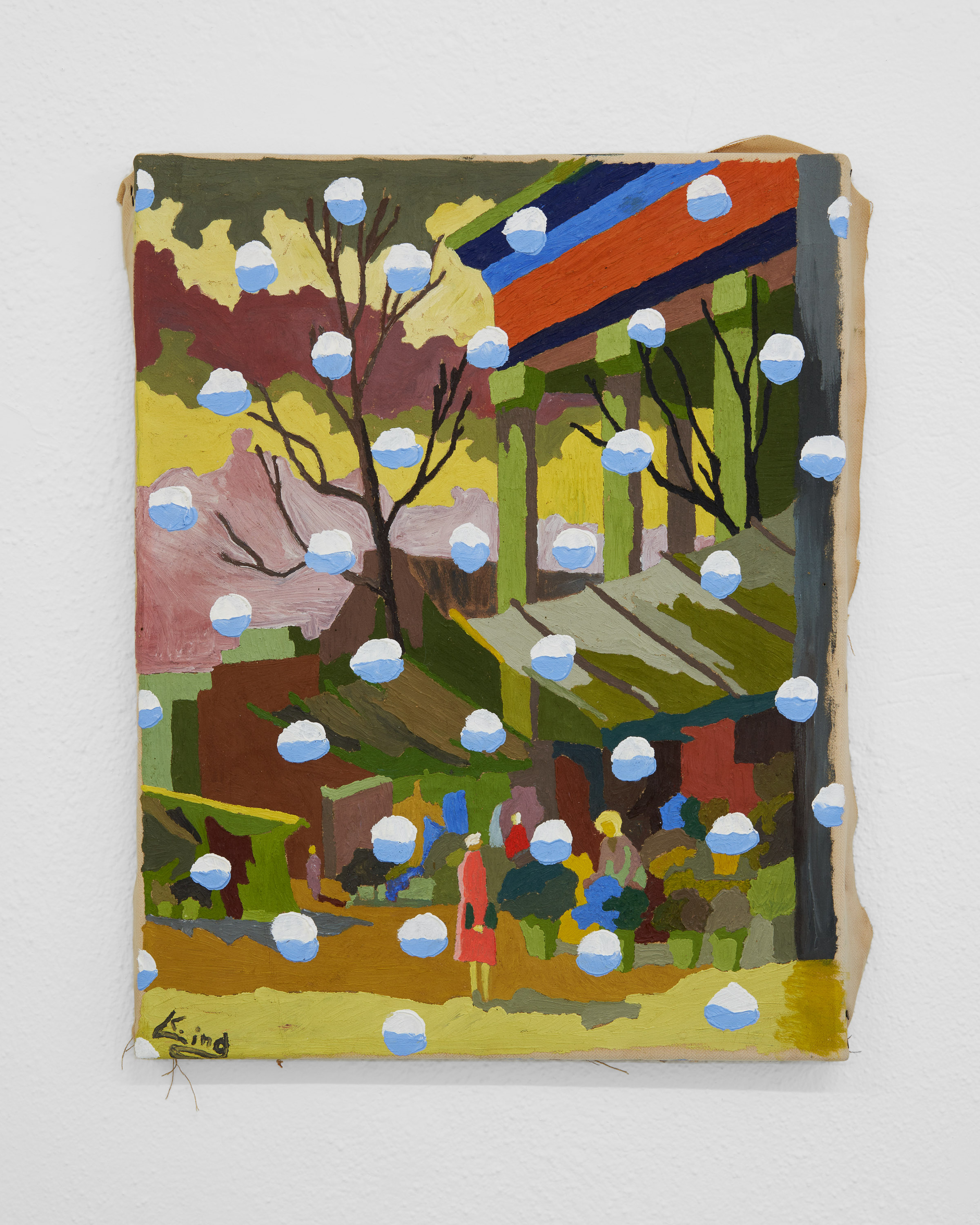
Mads Lindberg. Untitled (Snow Painting), 2023. Oil on found painting. 41 x 32 cm 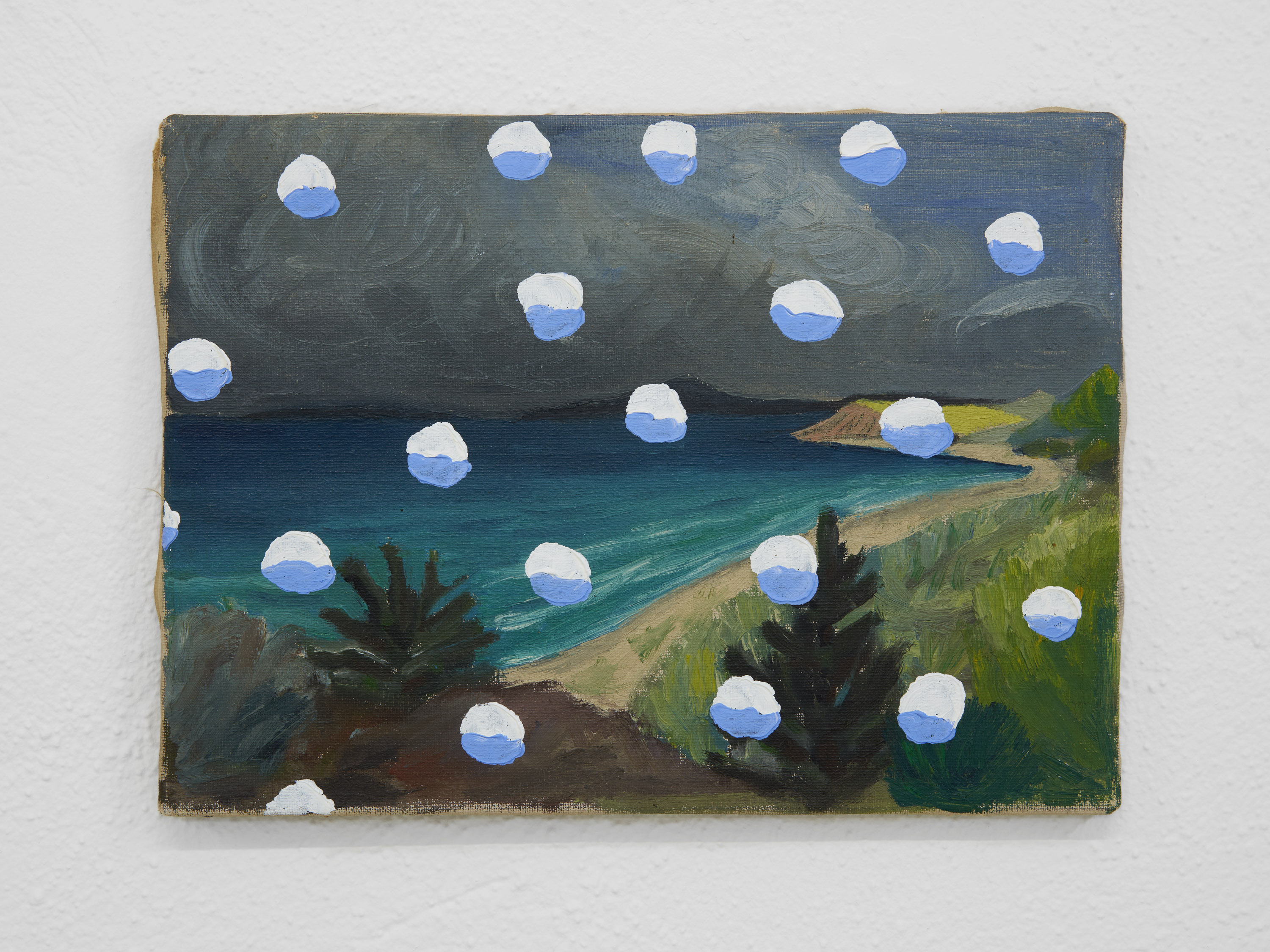
Mads Lindberg. Untitled (Snow Painting), 2023. Oil on found painting. 22,5 x 30 cm 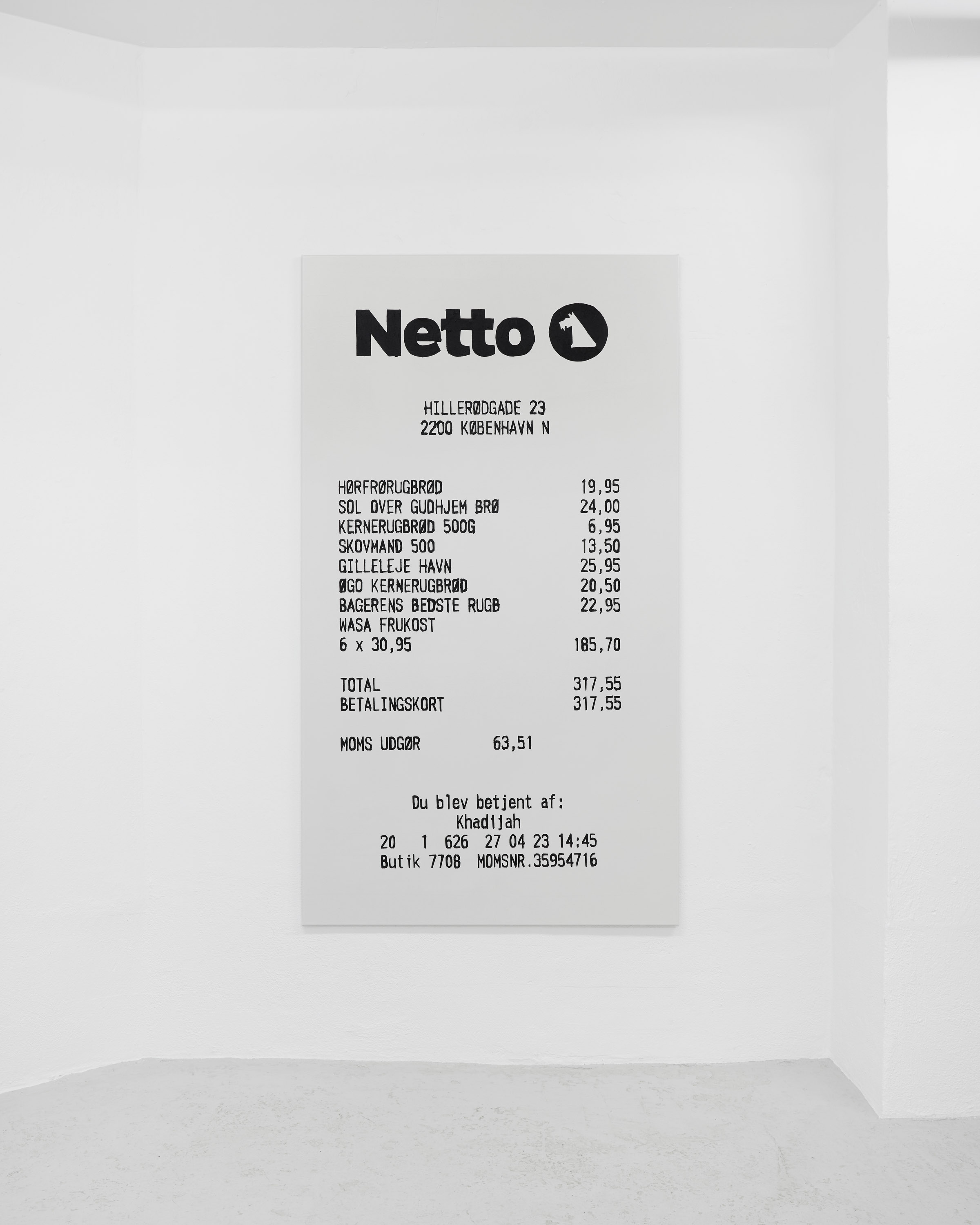
Mads Lindberg. … 2023. Installation view. Photo by Brian Kure 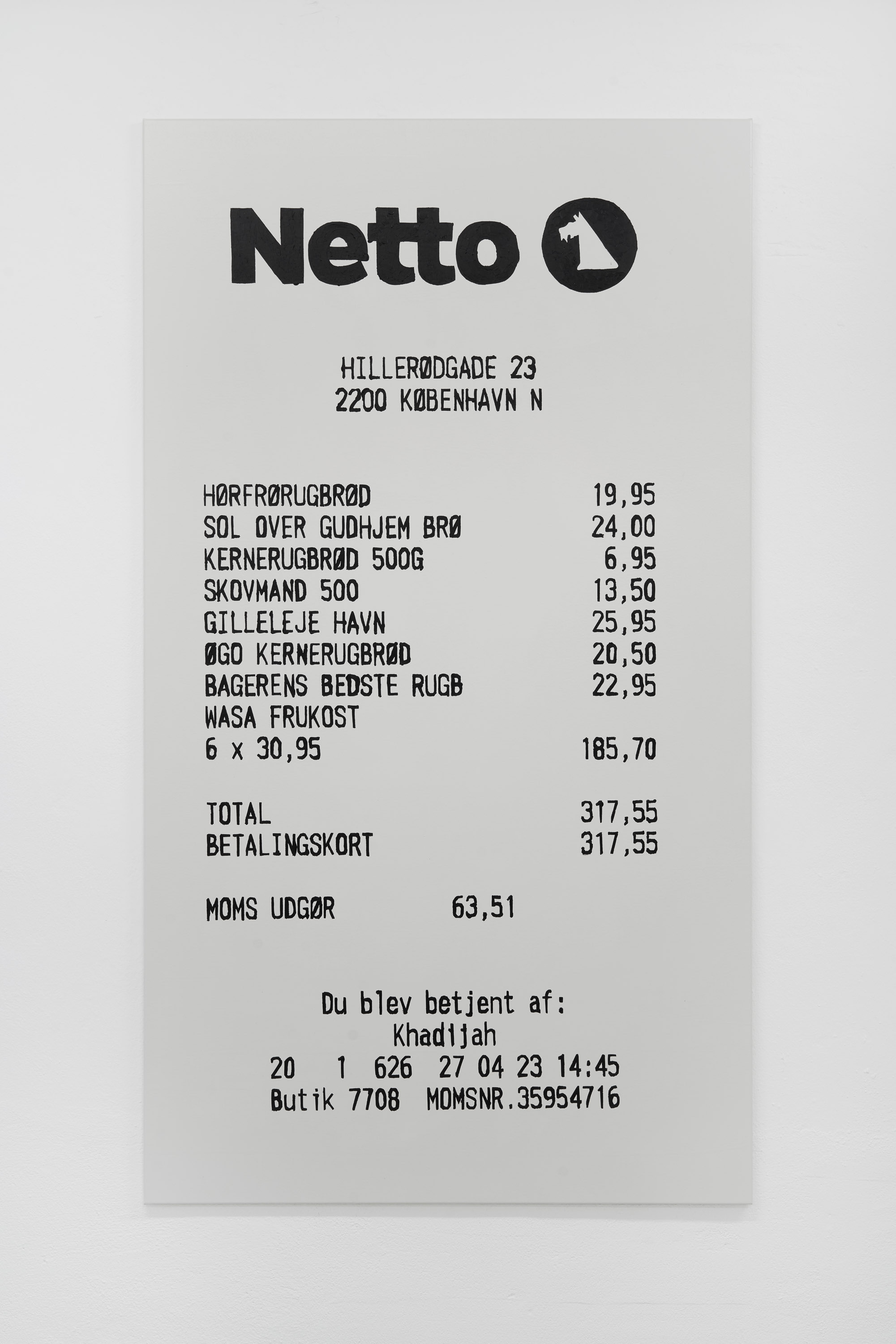
Mads Lindberg. Untitled (Rugbrød), 2023. Oil on canvas. 90 x 160 cm 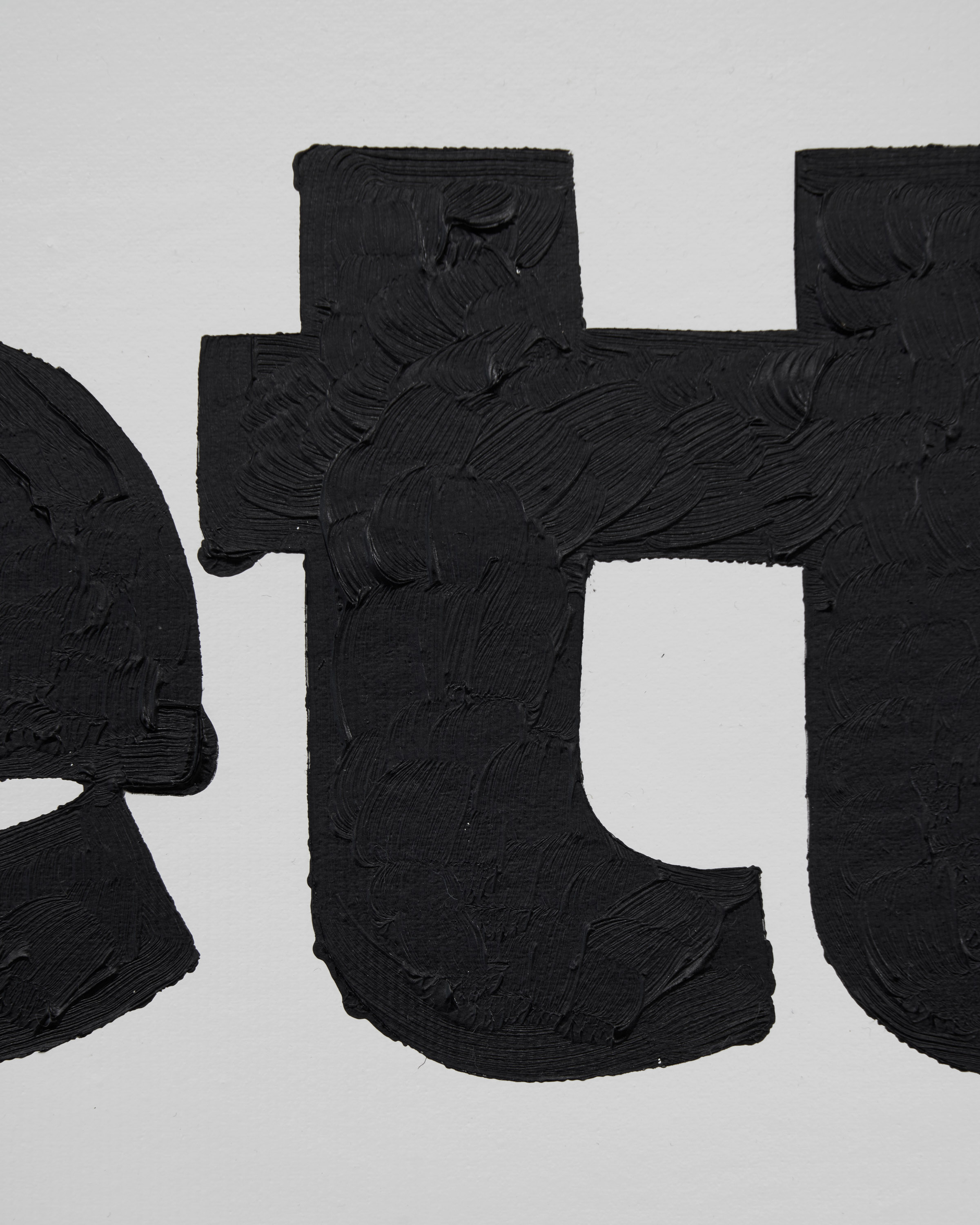
Mads Lindberg. Untitled (Rugbrød), 2023. (Detail)